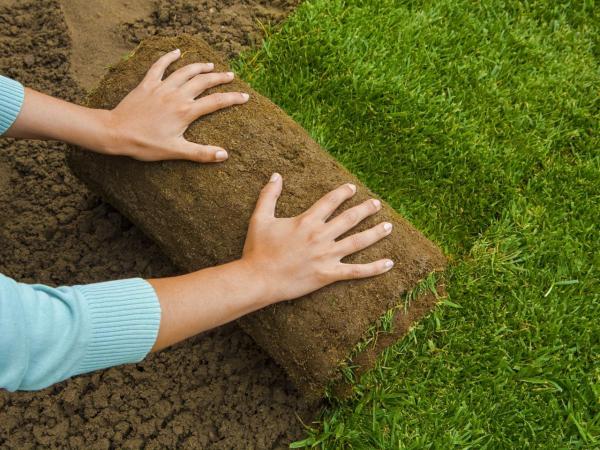Dripping Gardening May 9

The delightful month of May is here and that means we get rain on our lawns and gardens! Sometimes more rain than we want at any one time but that is just part of living in central Texas. May is also the month when I really focus on my lawn. This month is a great time to do any filling, top dressing, dethatching, or aerification that might be needed.
What I am really suggesting is that you take a good look at your lawn now and really evaluate it. Are there areas that are low allowing water to pool rather than spread out and percolate down? Are there areas that have not greened up or recovered well from the winter that may need to be renovated? Do you need to do some sprinkler maintenance?
It is a good idea to talk to your local County Extension agent or local retailers and try to determine the cause or causes of lawn issues before you blindly begin work. Decide what needs to be done and then make a plan to fix the issues.
For example, planting warm season grasses may be done now through August or September – keep in mind that doing it earlier in the spring/summer is better than doing it later. Planting now has the advantage of allowing the grass to take hold in the cooler and wetter weather of May. It also allows the grass to grow strong and establish over the summer and fall months before their first winter comes, this could be very important is we have a severe winter.
The basic steps to lawn planting are pretty simple:
• I always recommend getting a soil test done – it is easy, and you can get help from a Texas Master Gardener just by contacting your local Texas Cooperative Extension Service. This will help you identify what, if any amendments need to be added before you plant.
• Remove any debris especially if your home is new construction.
• Remove as many weeds as possible from the growing area.
• Till the soil 4 to 6 inches deep. Now those of you that have been reading my columns for some time may be surprised that I recommend tilling as I am a well-known “no-till” gardener but when working on the lawn I do recommend tilling once, just the first time and never again.
• Apply any nutrients or fertilizers recommended by your soil test and work them into the freshly tilled soil.
• Establish the grade and work smooth.
Plant using the method of your choice. The following are most commonly used:
Seeding – Broadcast ½ of the seeds walking the area north to south then walk the area again going east to west with the remaining seed. This will ensure an even coverage. Water lightly every day until you see sprouts of grass coming up, then regularly until the young plants are established.
Plugging – Plant 2- to 4-inch diameter plugs 6 to 12 inches apart (greater spacing will cost less but full coverage will take longer). Once the plugs are planted gently step (not stomp) on each of them a time or two to firm them in place. Water lightly every day for a full week, every other day for the next week, then less frequently but more deeply especially if the temps get really high.
Sodding – Lay the sod in a brick pattern (alternate ends and middles) with the seams pressed as tightly together as possible. Water the new lawn every single day for the first week, every other day for the next week, then less frequently but more deeply especially if the weather is dry and hot.
Now, if your lawn has a few low places in it where water pools, May is a good time to correct this situation. The fix is not difficult:
• Choose a soil that matches your native soil for the fill, you do not want to use a light sandy soil as a fill for dark, black, heavy clay soil.
• Mow the grass and spread a layer of compost no thicker than ¼ of an inch. This may not seem like much, but trust me, it is plenty. Fertilize and further amend as necessary.
• If you need to apply fill soil deeper than 2 inches, remove the sod, apply the fill, and then replace the sod. You might want to replace with new sod at this point if the sod you removed looks week, sickly, or weedy.
• Water the newly filled area as recommended above for sod. After the grass is established mow, water and amend as per your normal maintenance activities.
May brings more rain to the area but it also brings in higher temperatures. Fahrenheit reaching the mid-90s is expected this month so you will want to calibrate your sprinkler system to apply ½ to 1 inch of water when the rains depart, and irrigation becomes necessary. Calibration is easy and is the same for an in-ground system or a sprinkler attached to the end of a garden hose.
• Set out several straight edge containers in the spray pattern of the sprinkler you use to water the lawn. I just recycle tuna cans for this.
• Turn the water on and make note of the time.
• Watch the cans and when one inch of water has accumulated in most of the cans turn off the water and check the time again. The time elapsed from the moment you turned on the water until you turned it off is how long it takes your sprinkler to apply 1 inch of water to your lawn (1/2 an inch would take half as long).
Now that you know how long to run your sprinkler you need to know when to run them. Be sure to water early in the morning so that the water is not as likely to evaporate away from the grass and so that the lawn does not go into the evening wet. Late watering can encourage fungal disease.
Now a bit about the most important thing in lawn care, mowing. Proper mowing is critical to a lush, healthy lawn. It needs to be done regularly before the grass gets too high. Ideally, no more than 1/3 of the grass blade should be cut off each time you mow. In fact, it is far better for the lawn to have less of the blade cut off twice a week than too much cut off once a week. I like to mow off a small bit of my grass twice a week, it is better for the grass and good exercise for me too! Plus, by cutting my grass properly I can just leave the tiny grass cuttings right on the lawn where they will compost down and provide nourishment for the lawn.
Do not wait too long before mowing especially as the rate of grass growth speeds up during the summer, at least until it gets so hot that we have watering restrictions and our yards start to brown out. But do not worry too much about the grass going brown, conserve the precious water, your lawn will be fine, it is just dormant and will green up again with the first good rainfall.
Get out and enjoy the beautiful weather we are treated to this time of the year. Enjoy the wildflowers, your garden an even mowing your lawn, because right now it is lots of fun but come the heat of august it seems a bit more like work!



